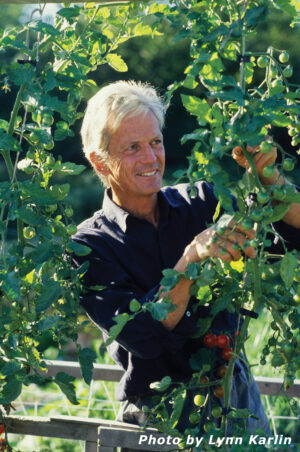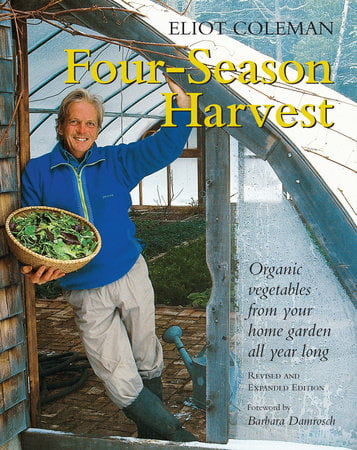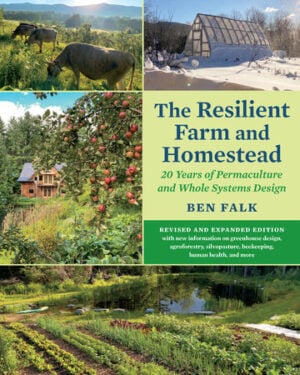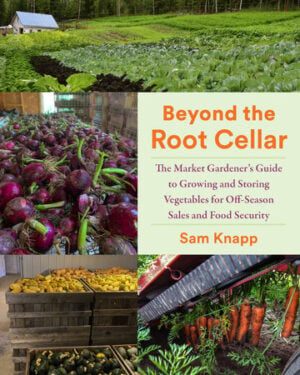Praise for The Self-Fed Farm and Garden:
“Over the years, Eliot Coleman has been a mentor and guiding light in my own journey as a market gardener. In The Self-Fed Farm and Garden, he goes even deeper—offering a radical yet timeless understanding of what organic farming is truly about. A true contrarian in the best sense, only Eliot could bring such clarity and wisdom to the conversation. He reminds us that the farm is not just a place of production, but a space of ecological harmony and farmer autonomy. This book is the culmination of a lifetime of insight and a must-read for anyone who believes that food can be a force for change. We’ve all been waiting for a book like this—a new classic for the ages.”
—Jean-Martin Fortier, author of The Market Gardener; founder, the Market Gardener Institute
“In his unparalleled professor-meets-practice persona, Eliot Coleman brings ‘I can do this’ inspiration to farmers and gardeners yearning to break free from off-farm fertility dependency. Few ideas could be more needed and prescient than soil fertility self-reliance. The Self-Fed Farm and Garden explains how, and in so doing, this little book spells economic and process freedom.”
—Joel Salatin, farmer; author; food freedom advocate
“Generations of growers continue to be inspired by Eliot Coleman’s organic vision, practical methods, and articulate instruction. The Self-Fed Farm and Garden challenges its readers to reconsider the restorative power of plants, healthy soil, and the integrity of organic farming in the modern world.”
—Jack Algiere, Stone Barns Center
“What happens when you combine one of the most talented organic growers alive with a scholar who writes beautifully? You get Eliot Coleman’s new classic, The Self-Fed Farm and Garden. I have been a student of Eliot’s for many years, and he continues to challenge my thinking and change my life. This book steps back from the frantic energy of the marketplace to take a second look at what we mean when we say ‘organic,’ why we need it, and how to do it right. Eliot helped me to learn all this in the first place. His remembrance of things past and hope for things yet to come is needed. May many read this book and ACT on it. It will change you and the world. This is the book we have needed.”
—Dave Chapman, founder and codirector, Real Organic Project
“Leave it to America’s foremost organic farmer, agricultural historian, and talented teacher to map out the final frontier for organic farmers and gardeners. In this book about Big Biomass, Eliot Coleman reveals his practical system of fertility independence. He explains that we all can grow our own crop fertility amid the process of rotating our fields and gardens. The distillation is to yearly dedicate a third of your ground for a planting of lush, soil-nourishing crops of winter rye and hairy vetch. In this era of ubiquitous pollution, Eliot’s Self-Fed solution is safe, sound, and timely.”
—Jim Gerritsen, founder and farmer, Wood Prairie Family Farm
“Eliot Coleman’s The Self-Fed Farm and Garden is a treasury of his stored experience, gleaned over a lifetime of curious experimentation, reflection, and practice dropping seed and gleaning his harvest. For Eliot, self-reliance and discovering the beauty of organic practice are principles that frame his experience. The book is a journal of his lessons learned: timeless truths bound by the elegance of what nature reveals to the observant eye. His chronicles can be appreciated by all who choose to produce food at any scale. The book is also a treat to read, allowing us insight into a lifetime of learning by a curious and principled farmer. It assures that future generations of new farmers, and old farmers like myself, will utilize his observations to make their farms more elegant and wildly more productive—places that reflect their own principled assembly of the pieces that fit their place, climate, community, and mind.”
—Paul Muller, cofounder and farmer, Full Belly Farm
“Eliot Coleman’s ideal, the self-fed farm, is regenerative, resilient, and resourceful. It relies on the regenerative capacity of diverse living ecosystems to make the best use of Nature’s bountiful resources. It is as close to sustainable farming as it’s possible to get in today’s unsustainable society.”
—John Ikerd, professor emeritus of agricultural economics, University of Missouri-Columbia
“Eliot Coleman evokes a self-sustaining concept of biological completeness to elegantly explain how to create a self-fed farm by cycling and recycling on-farm fertility, addressing soil, plant, and farm needs while providing nutritious food.”
—Kris Nichols, lead soil scientist, Food Water Wellness Foundation; former chief scientist, Rodale Institute
“Over the course of nearly two centuries, maverick scientists and farmers glimpsed that soils, if managed well, hold enough mineral reserves for virtually permanent fertility. Eliot Coleman revives this long-buried insight based on his own work, showing how green manures, cover crops, deep-rooting legumes, and mineral reserves can sustain and grow soil fertility, supporting self-reliant farms without purchased inputs, in perpetuity.”
—Will Brinton, PhD, soil analyst; founder, Woods End Laboratories
" The Self-Fed Farm and Garden an ideal book for curious eaters, food growers, and anyone who wishes to be a better steward of the land."
—Civil Eats
Praise for Eliot Coleman:
“The incomparable Eliot Coleman . . . serious, meticulous, inspiring.”
—The New York Times
“One of America’s most innovative farmers.”
—Michael Pollan
“I have been a devotee of Eliot’s for years, fully agreeing with his methods for growing—in winter, spring, summer, and fall—tasty, nutritious produce with a minimum consumption of fossil fuels."
—Martha Stewart
“I know of no other person . . . who can produce better results on the land with an economy of effort and means than Eliot. He has transformed gardening from a task to a craft, and finally to what Stewart Brand would call ‘local science.’”
—Paul Hawken, author of Blessed Unrest; editor of Drawdown
“Coleman tracks his own constant search for perfection, a quality that has led more than one young farmer to exclaim, ‘I’d follow him anywhere.’”
—Joan Dye Gussow, author of This Organic Life
“Coleman speaks as if to a fellow home or market gardener, sharing what works for him and discussing what he knows and what he doesn’t know.”
—The San Francisco Chronicle









